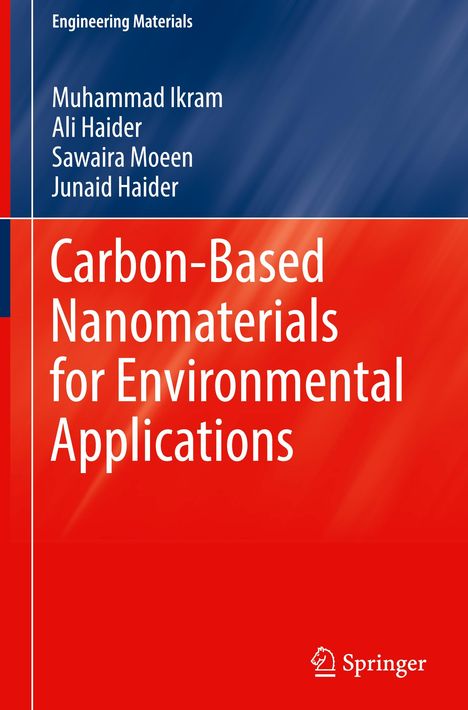Muhammad Ikram: Carbon-Based Nanomaterials for Environmental Applications, Gebunden
Carbon-Based Nanomaterials for Environmental Applications
Buch
lieferbar innerhalb 2-3 Wochen
(soweit verfügbar beim Lieferanten)
(soweit verfügbar beim Lieferanten)
Aktueller Preis: EUR 186,19
- Verlag:
- Springer Nature Switzerland, 05/2024
- Einband:
- Gebunden, HC runder Rücken kaschiert
- Sprache:
- Englisch
- ISBN-13:
- 9783031593895
- Artikelnummer:
- 11879643
- Umfang:
- 136 Seiten
- Nummer der Auflage:
- 2024
- Ausgabe:
- 2024
- Gewicht:
- 377 g
- Maße:
- 241 x 160 mm
- Stärke:
- 14 mm
- Erscheinungstermin:
- 24.5.2024
- Hinweis
-
Achtung: Artikel ist nicht in deutscher Sprache!
Klappentext
This book delves into the incredible potential of carbon-based nanomaterials to solve critical ecological problems. Over the last few decades, substantial research has been conducted on the design and development of advanced nanomaterials for efficient energy storage, wastewater treatment, and antibacterial activities. Carbon-based materials have drawn increasing attention owing to their intriguing physicochemical properties and broad range of promising applications. Learn how these innovative materials are transforming our planet for improvements in areas as diverse as pollution management, purging water, and renewable energy.In this book, the authors briefly introduce the classification of carbon-based materials followed by describing in detail the various synthetic methods classified in two categories, i. e., bottom-up methods and top-down methods. After introducing the synthesis, environmental applications including water purification, air purification, and energy storage and antibacterial activity are explained. Finally, the challenges and opportunities in this promising research area are also proposed.
In the current book, carbon-based nanomaterials are addressed in aim for sufficient energy production, wastewater treatment, and as an antibacterial agent. In Chapters 1 and 2, the authors overview the introduction and classifications of carbon-based nanomaterials with its fabrication process. In the next section, the authors review the water purification applications and improvement in the dye degradation activity of carbon-based materials including doping, increasing surface area, and many others. Chapter 4 covers the air purification and energy applications of carbon-based materials along with their experimental and theoretical studies. Moreover, the next chapter explores carbon-based materials for antibacterial activity.
This book is specially designed for research purposes and helps the beginners, post-graduate students, and experienced researchers who are working on carbon-based materials and their applications. The book sheds critical light on the ways in which these materials might help make the world a better, more sustainable place.


